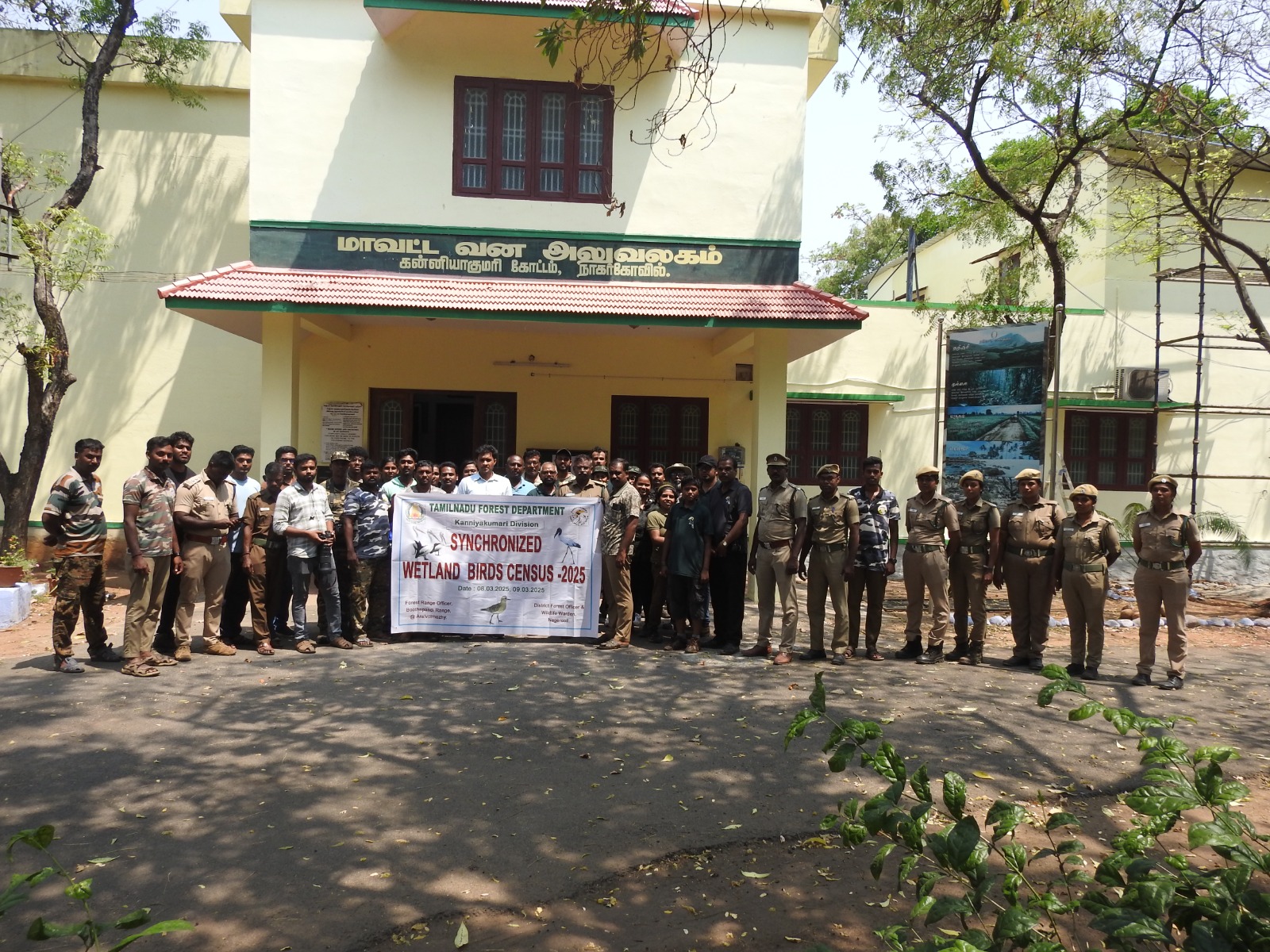
The Tamil Nadu Synchronized Bird Survey was conducted in two phases focusing on different habitats. The wetland bird survey took place on March 9th, while the forest bird survey was carried out on March 16th. For the first time, nocturnal birding was also included in the survey, with sessions held on March 8th and 15th to document bird activity during the night.

In the Kanyakumari district, the wetland survey covered 25 wetland sites, with around 40 volunteers participating alongside the Forest Department. During this survey, a total of 128 bird species were identified, and a population count of 10,450 birds was recorded. However, this number showed a decline compared to the previous year’s data. Notably, the duck population saw a significant drop, and the little grebe bird population was also observed to be considerably lower than in past surveys.
For the forest bird survey, 25 locations were selected, encompassing both urban and forested areas. This phase aimed to document the diversity and population of bird species in these varied environments. The inclusion of nocturnal birding added a new dimension to the survey, providing insights into the behavior and presence of birds during nighttime, which had not been systematically studied in previous surveys.

Over 50 dedicated volunteers took part in a comprehensive survey across the Kanniyakumari Wildlife Sanctuary, covering all five of its ranges: Velimalai, Azhagiyapandipuram, Kaliyal, Boothapandy, and Kulasekaram. Despite the rainy weather on the day of the survey, the team’s enthusiasm remained undeterred. They ventured out to their assigned locations, diligently recording bird sightings. The nocturnal survey recorded species such as Jerdon’s Nightjar and Brown boobook . The team’s unwavering commitment and meticulous efforts resulted in the documentation of an impressive 173 bird species and a total bird population of 3,345 individuals.

Overall, the synchronized bird survey highlighted changes in bird populations, particularly in wetland habitats, while also expanding the scope of data collection to include nocturnal species. The participation of volunteers and collaboration with the Forest Department played a crucial role in the successful execution of the survey.

